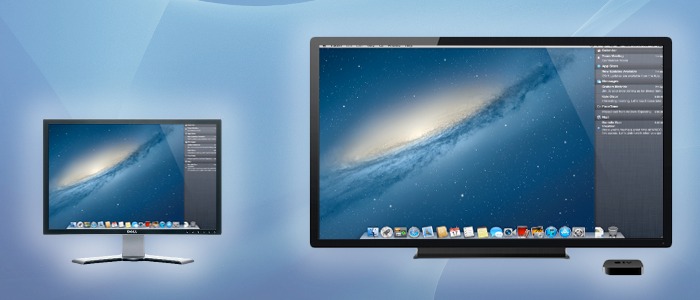
1. Check that your CPU is compatible
AirPlay Mirroring relies on the integrated Intel HD 3000 and HD 4000 graphics that are built into a few of Intel's newest 2nd-generation and 3rd-generation processors. All new Macs use these processors. If your Hackintosh's processor doesn't have HD 3000 or 4000, AirPlay will not work (check the "Ending Notes" at the bottom of this article for an alternative to AirPlay instead).
You can find out whether your processor has HD 3000 or 4000 by searching the model on Google. For example, if I search "Core i5-2500K" (my processor model) on Google, the first result is Intel's official page for the Intel Core i5-2500K. According to the "Graphics Specifications" section of that page, the i5-2500K processor uses "Intel® HD Graphics 3000", which will work with AirPlay Mirroring.
Additionally, your computer's motherboard has to support integrated graphics. Most motherboards fit the criteria; the only motherboards that don't support integrated graphics are the P67 types (e.g. the Gigabyte GA-P67A-D3-B3).
2. Set your integrated graphics to default
Mac OS X must recognize integrated graphics as the default graphics card in your computer, in order for AirPlay Mirroring to work. You can set integrated graphics as the default by going to your computer's BIOS, which is essentially the settings page for your motherboard. Newer motherboards use UEFI instead of BIOS, but for the purposes of this guide, we'll just refer to everything as BIOS.
Boot your computer, and enter the BIOS. To enter the BIOS on a Gigabyte motherboard, you have to press the delete key when it boots (before the operating system starts). Different manufacturers set different keys for opening the BIOS.
On newer Gigabyte motherboards, you need to change the setting called "Init Display First", so that integrated graphics are the first choice (instead of "Auto"). On motherboards from other brands, this setting will be called something similar, such as "Primary Display".
If your computer monitor is connected to a separate ("discrete") graphics card, then changing integrated graphics to the default will cause your computer to boot with a black screen. Basically, you won't be able to see anything on your computer screen until Mac OS X actually starts (once Mac OS X starts, everything will work as normal).
3. Install the Mac Mini system definition
Once you have finished setting the BIOS, boot into OS X Mountain Lion, and download Multibeast from tonymacx86.com (registration required). Run it, and install the "Mac mini" system definition.
System Definitions pretend that your Hackintosh is a real Mac. By default, most Hackintoshes use the Mac Pro system definition. However, older models of the Mac Pro don't support AirPlay Mirroring. When Mac OS X sees that you have the Mac Mini system definition instead, it turns on AirPlay Mirroring.
4. Enable your discrete graphics card (optional)
Graphics Enabler is a feature that helps Mac OS X work better with your graphics card, so it's turned on by default when you set up your Hackintosh with Multibeast. You generally need to have GraphicsEnabler turned on for integrated graphics to work, meaning that GraphicsEnabler will need to be turned on for AirPlay to work as well. However, NVIDIA's newest 600-series and 700-series graphics cards require you to boot Mac OS X with the boot flag "GraphicsEnabler=No" (without quotation marks), which turns off the feature.
If your Hackintosh uses a discrete 600 or 700-series graphics card, but you still want to use AirPlay, you will have to use Chimera bootloader's "IGP Enabler" instead. To enable IGPEnabler, first make sure that you have Chimera 2.2 (or newer) installed. (If you set up your Hackintosh with Multibeast in September 2013 or later, you probably already have it installed.) Next, go to /Extra in the base of your main hard drive, and open the file "org.Chameleon.boot.plist" with TextEdit. In the section between <dict> and </dict>, add the following line:
<key>IGPEnabler</key>
<string>Yes</string>
Save the file, and reboot your computer.
IGPEnabler is a feature that does the same thing as GraphicsEnabler, but only applies to integrated graphics. So if you need to turn off GraphicsEnabler but still need integrated graphics, just turn on IGPEnabler instead. This way, both your discrete NVIDIA card and integrated card will be still able to work.
Ending Notes
And that's all there is to it! You can now mirror your Hackintosh's screen to your AppleTV, and watch all of those awesome non-iTunes-approved videos (if you know what I mean).
One last thing: The paid app AirParrot ($10) does the exact same thing as AirPlay Mirroring, but it works with any Mac or Hackintosh, regardless of integrated graphics. So if your Hackintosh's processor doesn't have the integrated HD 3000 or 4000 graphics required for AirPlay Mirroring (or this guide simply doesn't work for you), you can always just try out AirParrot instead.










